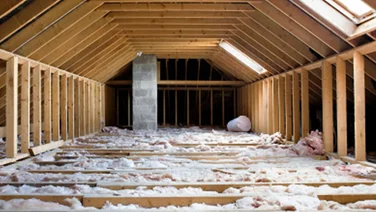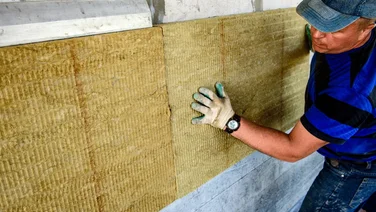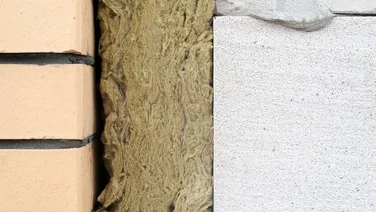- External wall insulation (EWI) is one of the most effective ways to reduce home heating costs, though it requires a substantial upfront investment.
- EWI can save homeowners hundreds of pounds annually on energy bills, making it a cost-effective solution over the long term.
- Grant schemes help offset the initial costs, making EWI more accessible for homeowners looking to improve energy efficiency.

External wall insulation being installed. Credit: Energy Saving Grants/FlickrExternal wall insulation (EWI for short) is one of the most effective (but very costly) ways of insulating your home. Costs are typically around £8,000 to around £22,000 or more for larger properties.
However, for this substantial capital investment, you get one of the best ways to cut your heating bills and save a pretty penny over the long term. Depending on the size of your home, EWI typically enables you to save anywhere between £140 and £700 annually.
With those kinds of savings, you’ll repay the initial investment relatively quickly. However, some grant schemes are also available to help with the initial outlay.
We’ll discuss all this later, so read on to find out what EWI is, how much it’ll likely set you back, and how much you could save by considering installing it.
Get free external wall insulation quotes
Answer a few quick questions, and our trusted installers will send you bespoke external wall insulation quotes – for free.
Compare quotes nowHow much does external wall insulation cost in the UK in 2024?
As we’ve previously mentioned, the cost of a complete EWI installation will depend entirely on the material chosen, location, size of the job, etc. However, as a rough rule of thumb, expect to pay around £100 per m2.
That being said, some very rough estimates by property type are as follows:
| House Type | Total Cost Range* | Yearly Energy Savings |
|---|---|---|
| Detached | £15,000 – £22,000 | £400 – £500 |
| Semi-Detached | £10,000 – £16,000 | £300 – £400 |
| Mid-Terrace | £8,000 – £12,000 | £250 – £350 |
| Apartment | £6,000 – £10,000 | £150 – £250 |
*Prices courtesy of mybuilder.com
External wall insulation cost per m2
The cost of external wall insulation depends on factors such as the size of the property, the materials used, the complexity of installation, finishing options, and location.
The work is highly specialised and should only be attempted by trained, experienced, and insured contractors. Insulation specialists generally charge around £250 per person per day.
As you can imagine, installation costs will increase for larger properties or homes with intricate architectural features, irregular shapes, or multiple stories due to the additional time required. Location (like everything else in life) will also impact the price, with city locations generally attracting a premium.

Only professionals should ever attempt to install EWI. Credit: Knauf Insulation/Flickr
Breakdown of external wall insulation costs
The most important factor determining external wall insulation costs is the type of external walls you have.
In the UK, this typically includes solid walls or cavity walls. Less common are prefabricated, non-standard wall types, but these are pretty rare.
Cavity walls are common in houses built after 1920. They are generally quick and easy to insulate, and the typical cost to insulate a semi-detached house is around £475.
On the other hand, most houses constructed before 1920 have solid walls, which allow twice as much heat to escape. Unfortunately, solid wall insulation is significantly more expensive.
When considering insulating your external walls, you can insulate them internally or externally. Insulating externally involves attaching a layer of insulation to the outside of your wall using mechanical fixings and adhesive and then covering it with protective layers of render or cladding.
However, insulating internally can save money; it reduces the size of a room by bringing in the wall by around four inches.
Finally, the last major consideration is whether the job will require scaffolding—a single scaffold up to 10m high costs about £625 per week.
Material costs
When it comes to a complete external wall insulation, other materials will also be needed for the full install. This will include adhesive and fixings to attach the insulation to the walls physically.
The contractor will also need to install a protective mesh to prevent cracking and finish the whole thing off with some rendering to make it look nice. The costs for these are roughly as follows:
| Material | Average Cost per m |
|---|---|
| Insulation Boards | As previous table |
| Adhesive and Fixings | £7.5 m2 |
| Reinforcing Mesh | £3.5 m2 |
| Render (Base and Top Coat) | £14 m2 |
| Primer | £2 m2 |
| Finishing Materials | £4 m2 |
*Prices courtesy of mybuilder.com
Labour costs
Like any major building work, labour costs are one of the major elements of external wall insulation costs.
Installation labour costs vary greatly, typically between £150 and £300 per square meter. The complexity of the work and regional wage disparities influences the expenses.
Coordination and oversight of the project fall under project management, which may cost an additional £300 to £600. The project will likely require a specialist survey and assessment between £100 and £300.
Erecting and dismantling the scaffolding, which requires safety expertise, contributes to the labour expenses of £200 to £500.

Various materials can be used for EWI. Credit: Elmar Kye/Flickr
When will I break even on external wall insulation?
Given the large initial investment in such a project, you may not be surprised to learn that it will take some time to break even. The exact number of years depends entirely on the initial cost and the savings it generates yearly.
But, to give you some idea, the average payback is around 27 years for externally clad insulation and around 19 years for internally clad EWI. The system should be good for at least 30 years before any major work is needed.
Of course, if fuel costs rise dramatically, the payback period will decrease accordingly.
How can I reduce external wall insulation costs?
Investing in external wall insulation may be costly, but various subsidies and grants are available to help mitigate the expenses. The government, local councils, and energy suppliers offer these financial aids to encourage homeowners to enhance their energy efficiency.
One important grant program is the Energy Company Obligation (ECO) scheme, which requires energy suppliers to finance energy-saving measures for eligible households. Homeowners might be eligible for funding to pay for some or all of the cost of external wall insulation. Eligibility criteria typically depend on income level, type of home, and current insulation status.
Sometimes local councils offer grants or low-interest loans to help with the cost of home insulation. These initiatives are part of broader efforts to reduce carbon emissions and address fuel poverty. The availability and terms of financial assistance can vary widely, so it’s a good idea to check with your local council for specific programs.
If you’re still looking for assistance and have exhausted the first two suggestions, some energy suppliers offer discounts or rebates to customers who install external wall insulation. For this reason it is worth reaching out to your energy supplier to find out about the available offers and to learn how to apply.
Summary and next steps
External wall insulation is one of the best ways to help cut the costs of heating your home, and we commend you for considering this an option.
- External wall insulation (EWI) is a highly effective but expensive home insulation method. Depending on the property size, it costs between £8,000 and £22,000.
- EWI can lead to annual energy savings of £140 to £700, with the potential to recoup the investment over time.
- Installation costs vary by property size, complexity, and location, but labour costs average £150 to £300 per square meter. So it is a very good idea to get a handful of quotes before going down this road.
- Solid wall insulation is more expensive than cavity wall insulation, with solid walls found in homes built before 1920.
- Payback periods for EWI range from 19 to 27 years, depending on the installation type and fuel costs.
- Grants and subsidies like the ECO scheme and council initiatives can help reduce EWI costs for eligible homeowners.
If you’d like to invest in external wall insulation, please fill out this quick form with a few details. Once we receive your information, we’ll connect you with our trusted insulation installers, who will provide you with quotes to compare.







